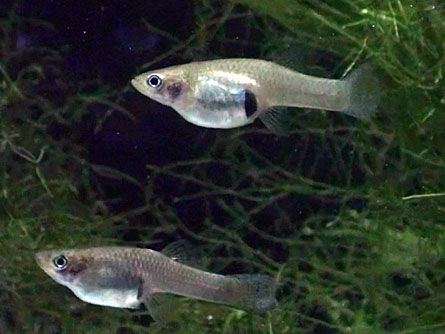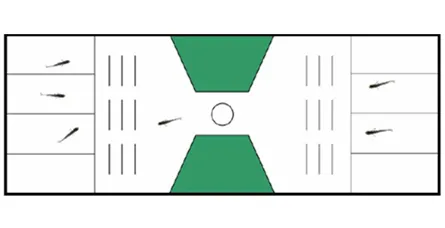Mosquito fish don’t just count on each other for protection from predators — they literally count each other for such protection. These guppylike fish can use numerical information to identify the larger of two nearby groups of fellow fish, report psychologist Marco Dadda of the University of Padova in Italy and his colleagues in an upcoming Cognition.


That’s a useful skill to have, the researchers say. Larger groups, or shoals, offer a more effective shield against bigger fish with empty bellies.
The researchers allowed individual mosquitofish in a tank to see groups of other fish, but barricades prevented them from seeing an entire group at once. When viewing fish one at a time in each of two groups, mosquito fish spent much more time near larger groups, Dadda and his colleagues report. The fish preferred groups of three over two fish and groups with eight fish over four fish.
“We have provided the first evidence that fish are capable of selecting the larger group of social companions by relying exclusively on numerical information,” Dadda says.
In two earlier studies, Dadda’s group demonstrated that mosquito fish can distinguish between large quantities, such as 16 versus 8, provided that the numerical ratio is at least 2:1. Such distinctions draw on an ability to estimate large amounts without counting, such as noting the greater area or density of the larger of two shoals, the researchers say.
But a basic counting proficiency comes in handy if fish within neighboring shoals are frequently moving in and out of sight, changing orientation or blocking each other from view, the Italian scientists suggest.
“This creative experiment provides good evidence that number is a salient part of the environment for fish and that the observed quantity judgment makes evolutionary sense,” remarks psychologist Michael Beran of Georgia State University in Decatur. Beran studies numerical abilities in chimpanzees and monkeys.
As in earlier studies of nonhuman primates and preschool-age children, the new investigation shows that mosquito fish can add up items from two sets and then choose the set with more items without seeing the entire contents of either at once, Beran says.
Evidence of number abilities also exists for dolphins, rats, chicks (SN: 4/25/09, p. 15), bees (http://tinyurl.com/bcuvtj) and even salamanders.
In the new investigation, Dadda’s team put each of 54 adult female mosquito fish into a water-filled tank and allowed them to explore the tank for one hour. A row of glass compartments on each side of the tank contained different numbers of female mosquito fish. Each compartment housed one “stimulus” fish or was empty. Plastic screens positioned between compartments prevented the counting fish from seeing more than one stimulus fish at a time.
During a second hour, a digital camera recorded the travels of each counting fish.
Fish spent roughly twice as much time — about 30 minutes — cruising within 5 centimeters (2 inches) of larger experimental shoals. This finding held whether stimulus fish appeared in adjacent compartments in the rows, so that the larger shoal covered a greater distance than the smaller one, or in intermittent compartments, so that each shoal covered the same distance.
Another experiment established that, for experimental shoals of equal size, subject fish had no preference for shoals containing adjacent or intermittently spaced stimulus fish.






